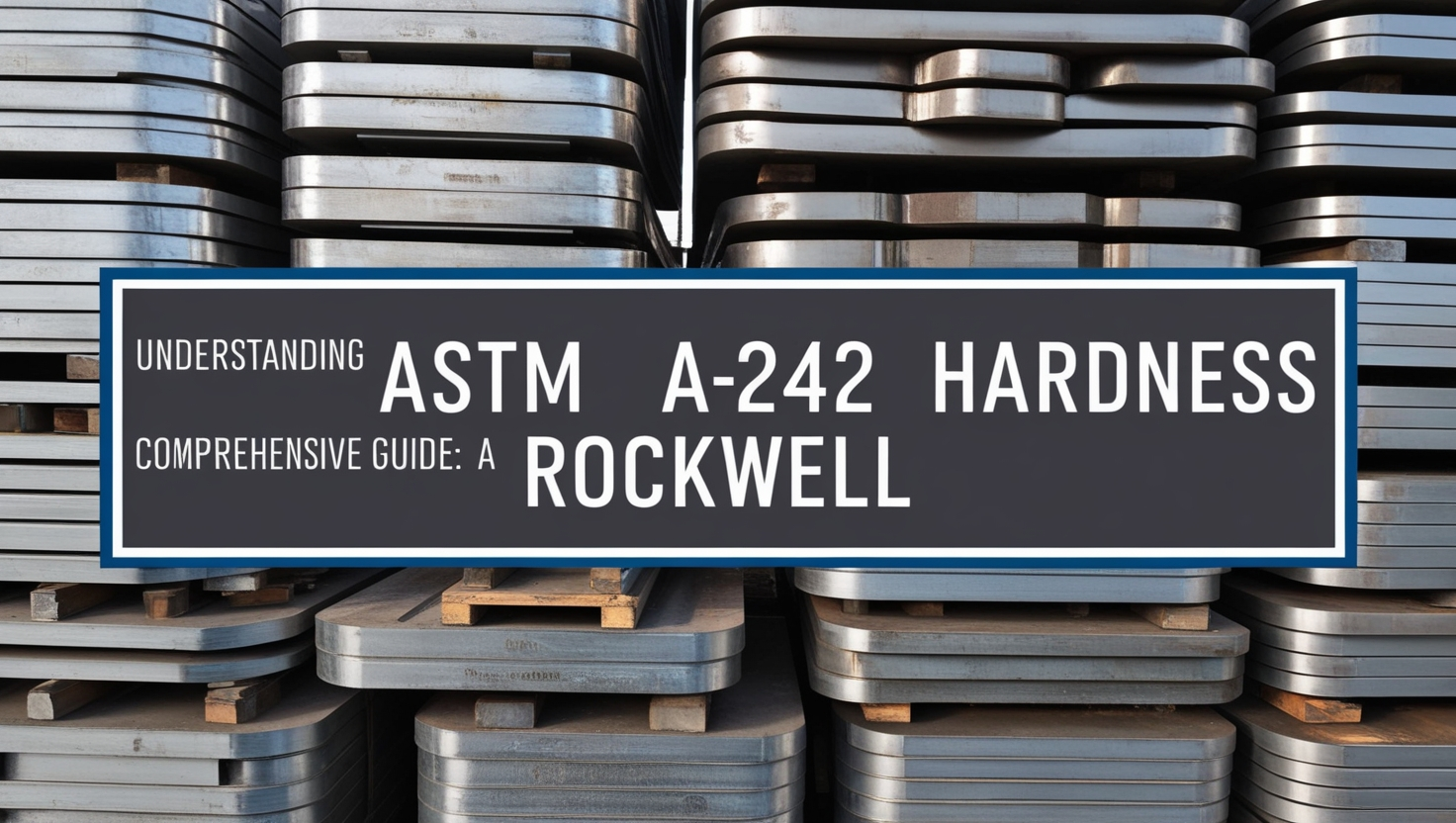
Introduction
When it comes to metals used in construction and industrial applications, understanding the properties of materials is essential. One common steel type known for its durability and resistance to atmospheric conditions is ASTM A-242. Many professionals and enthusiasts ask about the ASTM A-242 hardness Rockwell, as it provides insight into the material’s toughness and suitability for various projects. In this article, we’ll break down the ASTM A-242 steel type, its Rockwell hardness rating, and why this property is critical for assessing its practical uses.
What is ASTM A-242 Steel?
ASTM A-242 is a high-strength, low-alloy structural steel with excellent corrosion resistance. This steel is often chosen for projects exposed to the outdoors, such as bridges, sculptures, and construction materials. Its unique alloy composition gives it self-protecting properties, developing a rust-like appearance that creates a protective layer on its surface, which reduces the need for painting or additional coating.
The ASTM A-242 hardness Rockwell is an essential feature for users to understand because it helps gauge how well the steel can withstand various pressures and impacts without deforming.
Why is Hardness Important?
When discussing hardness in materials like ASTM A-242, we refer to a material’s ability to resist deformation, scratching, or denting. The ASTM A-242 hardness Rockwell measurement gives insight into how durable and wear-resistant the steel is, making it easier for designers, builders, and engineers to choose the suitable material for each application. This characteristic is significant in industrial and structural settings where the material will be exposed to wear and tear over time.
What is the Rockwell Hardness Test?
Knowing how hardness is tested is helpful for understanding ASTM A-242 hardness Rockwell. The Rockwell hardness test is widely used to measure a material’s resistance to indentation. It involves pressing a steel or diamond indenter into the surface of the metal with a certain amount of force. The depth of the indentation determines the hardness value on the Rockwell scale, which ranges from soft (lower values) to tough (higher values).
For ASTM A-242, the hardness is usually tested on the Rockwell B or Rockwell C scales, which are most suitable for metals. The ASTM A-242 hardness Rockwell rating typically falls within a specific range ideal for outdoor and heavy-duty applications.
Typical Rockwell Hardness for ASTM A-242
The typical ASTM A-242 hardness Rockwell falls within the Rockwell B range. While the exact hardness may vary depending on factors like manufacturing and heat treatment, ASTM A-242 often has a Rockwell B hardness of around 70 to 80. This range balances hardness and flexibility, making it strong enough to resist damage but not so hard that it becomes brittle.
For comparison, lower Rockwell numbers on the B scale mean the metal is softer, while higher values indicate increased hardness. The ASTM A-242 hardness Rockwell rating reflects a desirable balance for uses where the steel will face environmental and mechanical stress.
How ASTM A-242 Hardness Affects its Applications
The ASTM A-242 hardness Rockwell rating determines where and how this steel can be used. Here are some critical applications and how hardness impacts each:
- Construction and Bridges: ASTM A-242’s hardness allows it to withstand weathering while remaining structurally sound under heavy loads.
- Sculptures and Outdoor Art: Its Rockwell hardness and unique rust-like appearance make it a popular choice for outdoor art installations.
- Transportation and Heavy Machinery: ASTM A-242 is often used in equipment and vehicles that require strength and flexibility to absorb impacts due to its durability.
In all these cases, the ASTM A-242 hardness Rockwell ensures that the steel remains resilient under various types of stress, which is why it is trusted in many industries.
Benefits of ASTM A-242’s Hardness Properties
The ASTM A-242 hardness Rockwell rating provides several benefits that make this steel type suitable for outdoor and industrial applications. Some of these benefits include:
- Corrosion Resistance: The hardness complements its anti-corrosion properties, helping the steel withstand years of weather exposure.
- Longevity: A higher hardness means the steel is less prone to denting or scratching, leading to a longer lifespan.
- Cost Savings: ASTM A-242 doesn’t require frequent painting or coating, so it reduces maintenance costs over time.
For those wondering about the value of the ASTM A-242 hardness Rockwell, these benefits demonstrate why hardness matters in practical, long-term use.
Comparison of ASTM A-242 to Other Steels
Understanding the ASTM A-242 hardness Rockwell also requires knowing how it compares to other steel types. For example:
- ASTM A-588: This is another weather-resistant steel with a slightly lower Rockwell hardness than ASTM A-242. While both are strong, ASTM A-242 tends to be preferred for applications needing extra resistance to impact.
- Carbon Steel: Traditional carbon steel may have a similar Rockwell hardness, but it lacks the anti-corrosive benefits that make ASTM A-242 ideal for outdoor projects.
- Stainless Steel: Stainless steel is also hard, but it is often more brittle than ASTM A-242 and may not develop the same protective layer in outdoor settings.
These comparisons highlight how the ASTM A-242 hardness Rockwell rating contributes to its unique strength, flexibility, and weather resistance balance.
How to Check the Hardness of ASTM A-242
If you’re working with ASTM A-242 and need to confirm its hardness, you can perform a Rockwell hardness test using the following steps:
- Select the Correct Indenter: A steel ball or diamond indenter is typically used for testing on the B scale.
- Apply Force to the Surface: The test machine will press the indenter into the metal.
- Read the Depth of Indentation: The machine will measure the depth and calculate the hardness based on the Rockwell scale.
For professionals needing an accurate ASTM A-242 hardness Rockwell rating, this test ensures that the material meets project specifications.
Conclusion
The ASTM A-242 hardness Rockwell is a critical characteristic that makes this steel type popular for applications requiring strength and weather resistance. With a Rockwell B hardness of around 70 to 80, ASTM A-242 steel balances durability and flexibility, making it suitable for various outdoor and industrial uses. Whether you’re building a bridge, crafting outdoor sculptures, or designing machinery, understanding the hardness of ASTM A-242 is essential for choosing a suitable material.
Knowing about the ASTM A-242 hardness Rockwell, you can make informed decisions that ensure durability and performance while appreciating why this steel has become a trusted choice for projects facing harsh environmental conditions.


